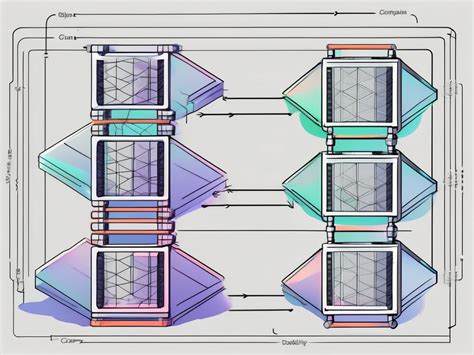Cryptocurrency and blockchain scalability: An exploration of layer 1 and layer 2 solutions
Blockchain technology has the way we think about digital assets, revolutionized and enables it to secure data safely, transmit and manage them in a decentralized manner. With increasing number of users and transactions in the network, however, scalability problems occur, which leads to overload, slower transaction times and ultimately reduced acceptance. In this article we will deal with the world of blockchain layers and examine the differences between layer 1 (blockchain) and layer 2 solutions for cryptocurrency.
What are blockchain layers?
Blockchain levels refer to the various components from which a blockchain network consists. These layers work together to ensure the integrity, security and scalability of the underlying blockchain. The most common layer structure is:
* Layer 1: Blockchain network (BCN) – This layer represents the entire blockchain, including its architectural, protocol and underlying data structures.
* layer 2: layer 2 scaling solutions
– These solutions are intended to improve scalability by unloading transactions from the main blockchain network.
layer 1 solutions

Solutions in Layer 1 aim to create a more scalable blockchain network. The most common approach is the introduction of additional levels via the existing BCN, so that users can interact with the blockchain in a new way. Some examples are:
* layer 2 scaling protocols : How optimism (opt), polygon (Matic) and Solanas spark.
* layer 1 ecosystem integrations : As offered by Polkadot (Dot) and Cosmos (atom).
* Layer 2 Wallets : Services such as Coinbase Wallet, Metamask and Trust Wallet offer users easy access to their cryptocurrencies.
layer 2 solutions
Solutions for layer 2, on the other hand, focus on reducing network overload and improving scalability. These solutions aim to discharge transactions from the main blockchain network and enable faster and more efficient transaction processing. Some examples are:
* Layer 2 optimized blockchain platforms : Like the Ethereum layer 2 (EIP-1559) and the polkadot relay.
* Layer 2 Wallets : Services like Binance Smart Chain (Bep-20), Kraken Wallet and Trust Wallet offer users access their cryptocurrencies while decentralization is maintained.
Challenges and restrictions
While Layer 1’s solutions aim to create a more scalable blockchain network, they have significant challenges and restrictions. This includes:
* Higher transaction fees : Since transactions are carried out outside of chain, users may have to pay higher fees compared to conventional payment systems.
* Reduced transparency : By executing transactions outside the chain, the transaction historium is not stored on the main blockchain, which makes it more difficult for users to pursue their assets.
Diploma
The choice between layer 1 and layer 2 solutions depends on the specific needs of the cryptocurrency ecosystem. While Layer 1’s solutions aim to create a more scalable network, they have significant challenges and restrictions. Solutions for layer 2 offer improved scalability, but require the compromises involved carefully.
When choosing a blockchain solution, it is important to weigh and select the advantages of each approach and to select the one that best matches its cryptocurrency goals. By understanding the differences between layer 1 and Layer 2, you can make a well-founded decision and ensure a successful start or growth strategy for your cryptocurrency project.

